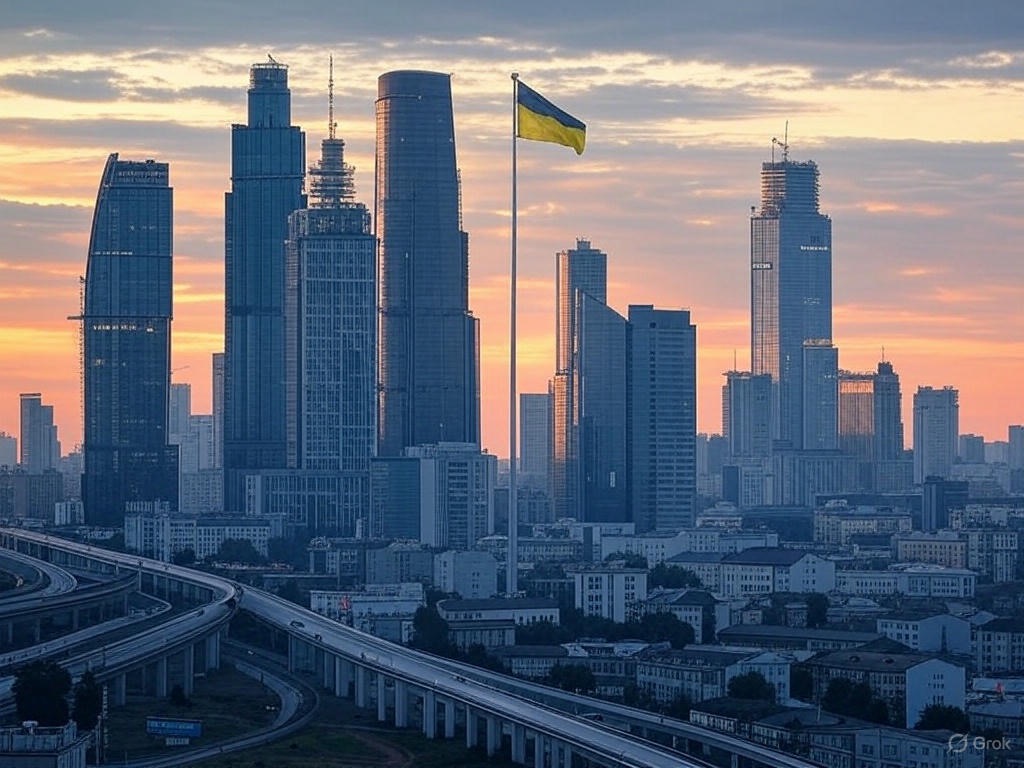Picture two titans locked in an endless dance of supremacy, each move calculated, each advantage fleeting. For over a century, New York City and London have waged this sophisticated war for the title of world’s premier financial center- a rivalry that shapes not just markets, but the very architecture of global capitalism.
Today, as New York clutches its narrow lead with a rating of 769 to London’s 762 on the Global Financial Centres Index, the gap between these giants has never been tighter. Yet beneath these numbers lies a far more complex story of historical legacies, strategic pivots, and looming disruptions that could reshape the battlefield entirely.
The Weight of History
London’s claim to financial royalty runs deeper than most realize. By the late 19th century, over half the world’s trade flowed through British pounds sterling, a testament to an empire where the sun never set. The Bank of England, established in 1694, didn’t just finance an empire; it created the template for modern central banking. Even as Britain’s global dominance waned, London refused to surrender its financial crown.
The city’s masterstroke came in 1986 with the “Big Bang” deregulation, a bold gambit that abolished fixed commissions and threw open the doors to foreign competition. Overnight, London transformed from a gentlemen’s club into a gladiatorial arena where the world’s financial warriors could compete freely. The strategy worked brilliantly: trading volumes soared, international banks flooded in, and London cemented its position as the gateway between American capital and global markets.
New York’s ascent followed a different script, one written in commerce rather than conquest. The Erie Canal, completed in 1825, transformed Manhattan from a promising port into America’s commercial jugular. By the late 1940s, New York had become an economic colossus: the world’s largest manufacturing center, its biggest port, and home to the New York Stock Exchange, established in 1792. The city didn’t inherit its financial throne; it built it, corporation by corporation, trade by trade.
The Modern Battlefield
Today’s competition plays out across multiple fronts, each revealing distinct advantages. New York’s dominance in raw financial firepower is staggering: the NYSE and Nasdaq together command over 60 trillion in market capitalization, nearly twenty times London’s 3.42 trillion. When it comes to equity trading, New York processes volumes that dwarf its rival, with daily volumes reaching 18.4 billion shares compared to London’s £5 billion in daily value.
But London refuses to be counted out. The city maintains an iron grip on foreign exchange trading, handling 522 billion daily in a market where geography and time zones matter as much as technology. It’s a reminder that in finance, specialization can trump size. London has become the master of niches, from Islamic finance to maritime derivatives, markets where expertise and relationships matter more than raw capital.
The talent war reveals another dimension of this rivalry. London employs 422,000 financial services workers and saw job postings rise 7 % even as Brexit uncertainties swirled. New York counters with 330,000 finance professionals and the gravitational pull of Wall Street’s biggest names: JPMorgan Chase, Goldman Sachs, Morgan Stanley. Yet America’s restrictive immigration policies increasingly handicap New York in attracting global talent, while London, despite Brexit, maintains its cosmopolitan appeal.
The Fintech Frontier
Perhaps nowhere is the competition more fierce than in financial technology. New York claims the top spot in global fintech rankings, but London struck back in 2022, attracting 9.5 billion in venture capital funding compared to New York’s 7.8 billion. Both cities understand that whoever masters the marriage of finance and technology will dominate the next century of global markets.
The regulatory philosophies diverge sharply here. The Trump administration promises a “develop first, regulate later” approach to artificial intelligence and cryptocurrency, potentially transforming America into the “crypto capital” of the world. London takes a more measured approach, with the Financial Conduct Authority emphasizing “guardrails” and “AI safety regulation.” It’s a classic trade-off: innovation versus stability, disruption versus trust.
Brexit’s Shadow and America’s Gamble
Brexit forced London into an existential crisis. The loss of EU “passporting” rights put £40-50 billion in annual revenues at risk. London’s economy was estimated to be £41 billion smaller by 2021 than if Britain had remained in the EU. Yet crisis bred creativity. The city pivoted hard toward sustainable finance, positioning itself to become the world’s first net-zero financial center. The Edinburgh Reforms and Financial Services and Markets Act represent London’s bet that regulatory nimbleness can compensate for market access.
Meanwhile, New York faces its own crossroads. The deregulation under a the Trump administration promises to unleash Wall Street, loosening lending oversight and potentially lowering capital requirements. Critics warn this could resurrect the boom-and-bust cycles that precipitated past crises. It’s a Faustian bargain: short-term dominance potentially purchased at the price of long-term stability.
The Hidden Advantages
Beyond the numbers lies a subtler competition. London’s office costs run half of New York’s, even as vacancy rates dropped to 7.3 % compared to Manhattan’s troubling 22.2 %. London’s legal system, built on centuries of common law precedent, remains the preferred jurisdiction for international commercial disputes. English law governs contracts worth trillions globally. soft power that doesn’t ,appear on balance sheets but shapes them nonetheless.
New York counters with the raw energy of American capitalism and the world’s deepest capital markets. Over 75 % of U.S. hedge fund professionals work within its borders. The Federal Reserve Bank of New York wields influence that extends far beyond America’s shores. When global crises strike, the world still looks to Wall Street for signals and solutions.
The Next Decade’s Battle Lines
The future promises intensified competition rather than resolution. Both cities will likely maintain their duopoly, but the terms of engagement are shifting. Geopolitical instability, from cyber threats to great power competition, poses risks neither city can fully control. The global economy’s projected 2.3% growth in 2025 suggests a low-growth environment where market share becomes zero-sum.
Technology will prove decisive. Artificial intelligence promises to revolutionize everything from trading strategies to risk assessment. Green finance offers trillions in new opportunities as the world transitions toward sustainability. Digital assets could either reinforce existing hierarchies or shatter them entirely.
The regulatory divergence between New York and London may create a form of specialized competition—New York as the capital of innovation and risk-taking, London as the bastion of stability and sustainable finance. This differentiation might benefit both, allowing global capital to choose its preferred flavor of financial center rather than forcing a single winner.
Yet challenges loom. New York grapples with structural budget deficits and rising costs that could erode its competitiveness. London must navigate the treacherous waters between regulatory autonomy and market access, walking a tightrope that could snap with one misstep.
The Endless Game
Perhaps the most profound insight is that this rivalry has no finish line. New York and London don’t just compete; they define each other, pushing boundaries and setting standards that lift both higher. Their competition creates the creative destruction that keeps global finance dynamic and innovative.
The battle for financial supremacy between these two titans isn’t merely about bragging rights or league tables. It’s about who writes the rules of global capitalism, who attracts the world’s brightest minds, and who provides the platform for humanity’s economic ambitions. In this endless duel, the real winners might be the global economy itself, benefiting from the innovations and efficiencies born from rivalry.
As both cities evolve, New York potentially embracing radical deregulation, London carving out post-Brexit specializations, their competition enters a new phase. The next decade won’t crown a permanent victor but will reveal which city better adapts to a world where technology, sustainability, and geopolitical uncertainty reshape the very meaning of financial power.
The titans dance on, neither yielding, both essential, locked in a rivalry that has become the heartbeat of global finance itself.
Disclaimer: Important Legal and Regulatory Information
This report is for informational purposes only and should not be construed as financial, investment, legal, tax, or professional advice. The views expressed are purely analytical in nature and do not constitute financial guidance, investment recommendations, or a solicitation to buy, sell, or hold any financial instrument, including but not limited to commodities, securities, derivatives, or cryptocurrencies. No part of this publication should be relied upon for financial or investment decisions, and readers should consult a qualified financial advisor or regulated professional before making any decisions. Bretalon LTD is not authorized or regulated by the UK Financial Conduct Authority (FCA) or any other regulatory body and does not conduct activities requiring authorization under the Financial Services and Markets Act 2000 (FSMA), the FCA Handbook, or any equivalent legislation. We do not provide financial intermediation, investment services or portfolio management services. Any references to market conditions, asset performance, or financial trends are purely informational and nothing in this report should be interpreted as an offer, inducement, invitation, or recommendation to engage in any investment activity or transaction. Bretalon LTD and its affiliates accept no liability for any direct, indirect, incidental, consequential, or punitive damages arising from the use of, reliance on, or inability to use this report. No fiduciary duty, client-advisor relationship, or obligation is formed by accessing this publication, and the information herein is subject to change at any time without notice. External links and references included are for informational purposes only, and Bretalon LTD is not responsible for the content, accuracy, or availability of third-party sources. This report is the intellectual property of Bretalon LTD, and unauthorized reproduction, distribution, modification, resale, or commercial use is strictly prohibited. Limited personal, non-commercial use is permitted, but any unauthorized modifications or attributions are expressly forbidden. By accessing this report, you acknowledge and agree to these terms-if you do not accept them, you should disregard this publication in its entirety.



